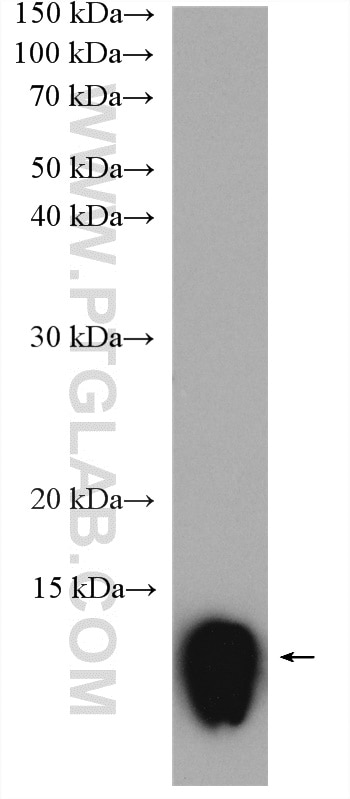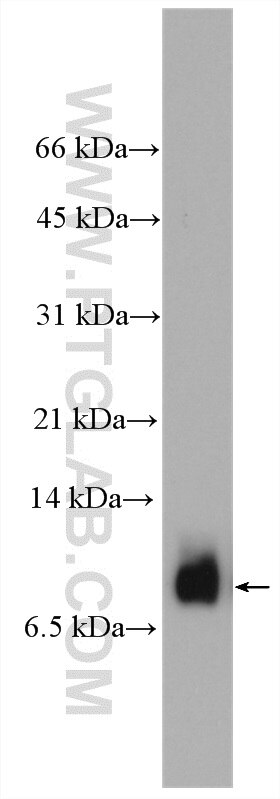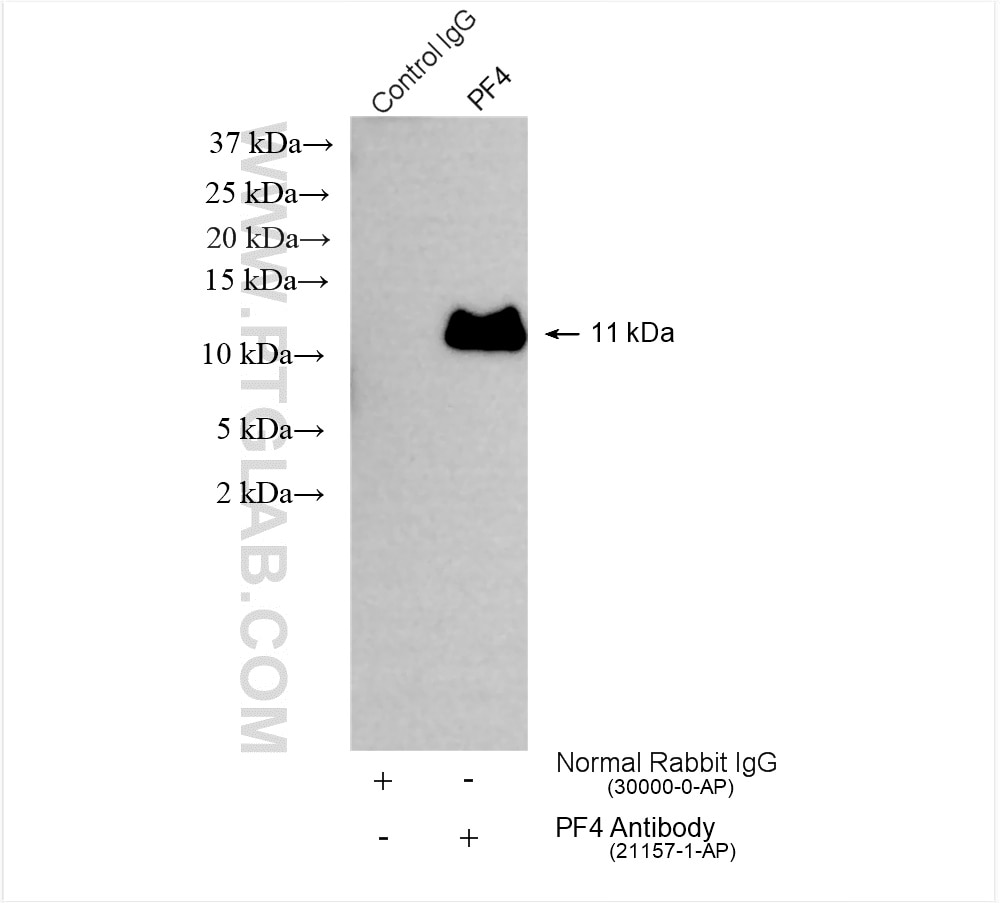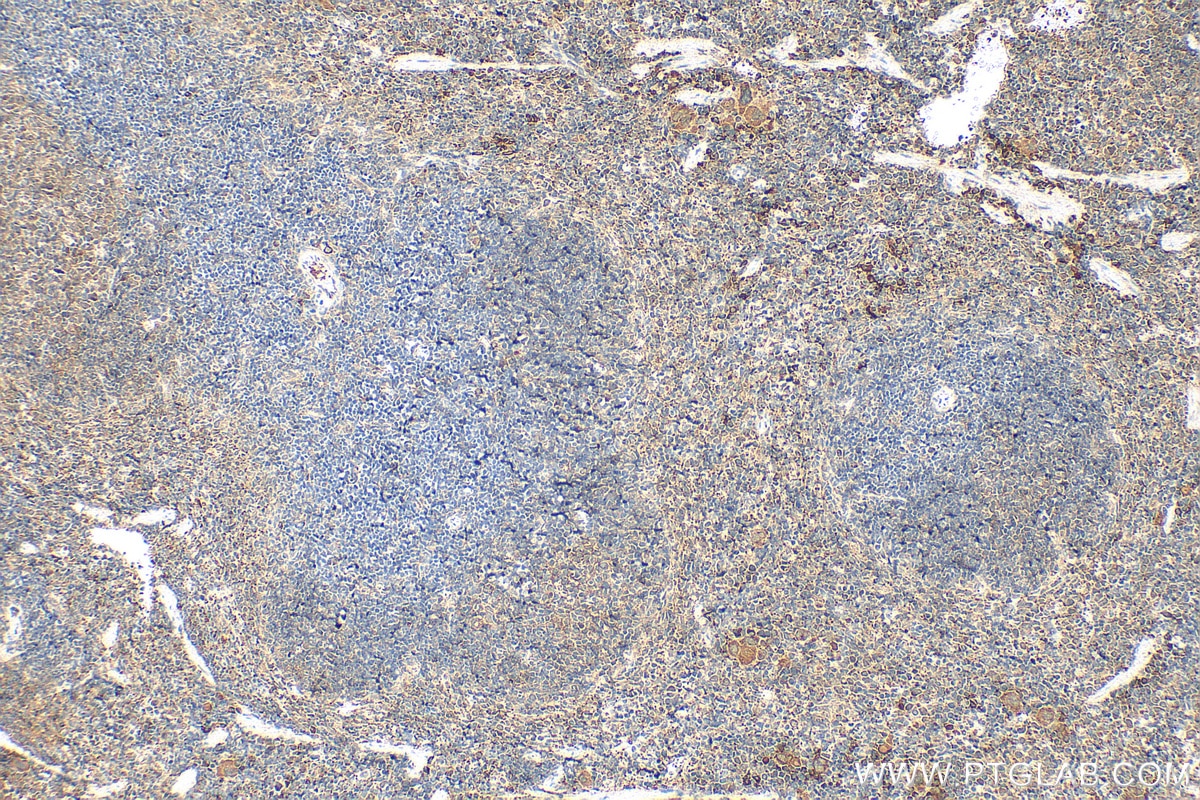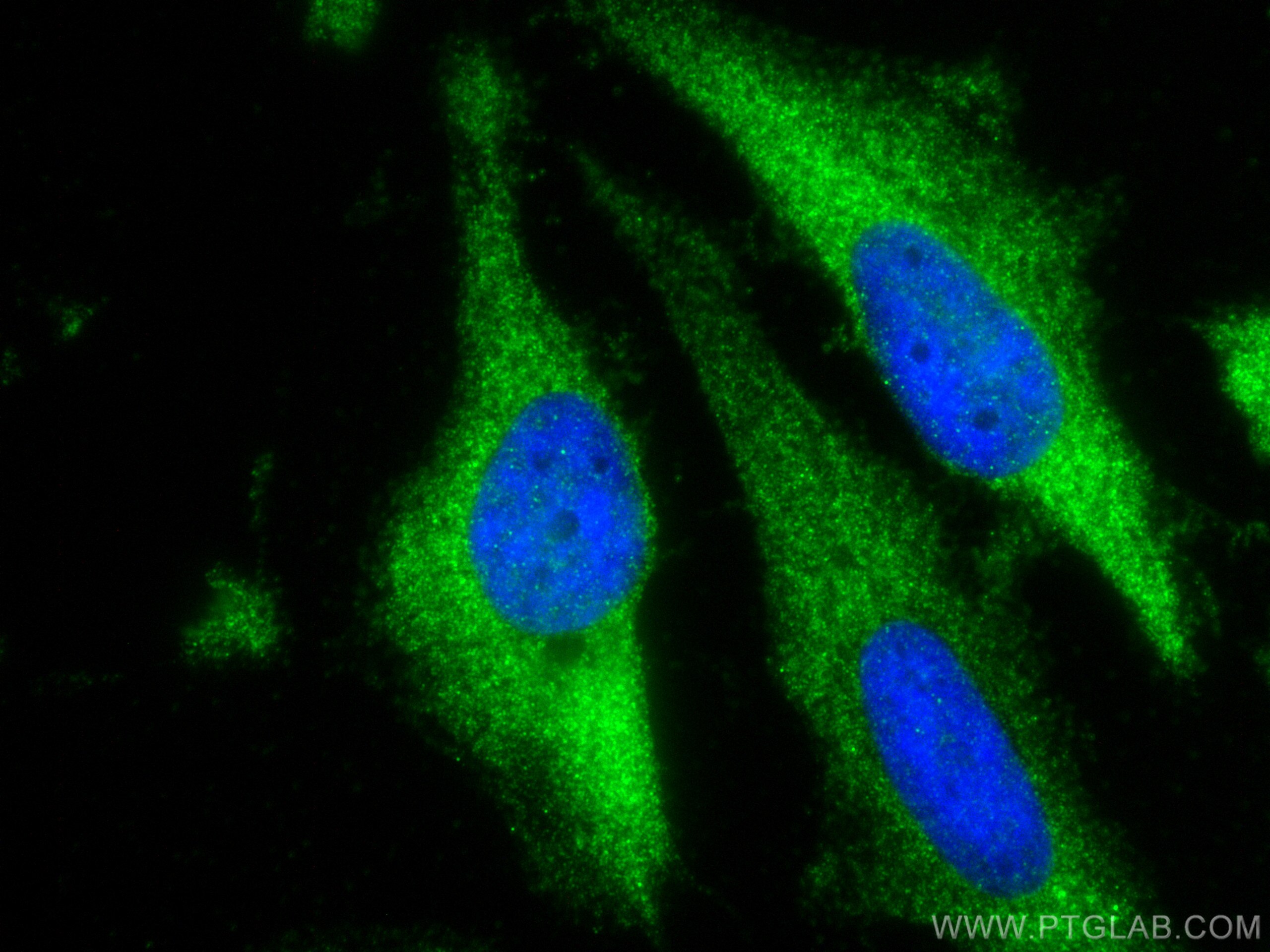Anticorps Polyclonal de lapin anti-CXCL4/PF4
CXCL4/PF4 Polyclonal Antibody for WB, IHC, IF/ICC, IP, ELISA
Hôte / Isotype
Lapin / IgG
Réactivité testée
Humain, porc, souris et plus (1)
Applications
WB, IHC, IF/ICC, IP, ELISA
Conjugaison
Non conjugué
N° de cat : 21157-1-AP
Synonymes
Galerie de données de validation
Applications testées
| Résultats positifs en WB | tissu de plaquettes de sang périphérique humain, tissu splénique de souris |
| Résultats positifs en IP | sérum de souris, |
| Résultats positifs en IHC | tissu splénique de souris, il est suggéré de démasquer l'antigène avec un tampon de TE buffer pH 9.0; (*) À défaut, 'le démasquage de l'antigène peut être 'effectué avec un tampon citrate pH 6,0. |
| Résultats positifs en IF/ICC | cellules HeLa, |
Dilution recommandée
| Application | Dilution |
|---|---|
| Western Blot (WB) | WB : 1:2000-1:10000 |
| Immunoprécipitation (IP) | IP : 0.5-4.0 ug for 1.0-3.0 mg of total protein lysate |
| Immunohistochimie (IHC) | IHC : 1:50-1:500 |
| Immunofluorescence (IF)/ICC | IF/ICC : 1:50-1:500 |
| It is recommended that this reagent should be titrated in each testing system to obtain optimal results. | |
| Sample-dependent, check data in validation data gallery | |
Applications publiées
| WB | See 9 publications below |
| IHC | See 3 publications below |
| IF | See 3 publications below |
Informations sur le produit
21157-1-AP cible CXCL4/PF4 dans les applications de WB, IHC, IF/ICC, IP, ELISA et montre une réactivité avec des échantillons Humain, porc, souris
| Réactivité | Humain, porc, souris |
| Réactivité citée | rat, Humain, souris |
| Hôte / Isotype | Lapin / IgG |
| Clonalité | Polyclonal |
| Type | Anticorps |
| Immunogène | CXCL4/PF4 Protéine recombinante Ag12345 |
| Nom complet | platelet factor 4 |
| Masse moléculaire calculée | 101 aa, 11 kDa |
| Poids moléculaire observé | 10 kDa |
| Numéro d’acquisition GenBank | BC093965 |
| Symbole du gène | PF4 |
| Identification du gène (NCBI) | 5196 |
| Conjugaison | Non conjugué |
| Forme | Liquide |
| Méthode de purification | Purification par affinité contre l'antigène |
| Tampon de stockage | PBS with 0.02% sodium azide and 50% glycerol |
| Conditions de stockage | Stocker à -20°C. Stable pendant un an après l'expédition. L'aliquotage n'est pas nécessaire pour le stockage à -20oC Les 20ul contiennent 0,1% de BSA. |
Informations générales
The chemokine (C-X-C motif) ligand 4 (CXCL4) is also named as PF4 (Platelet factor-4) and SCYB4. The platelets, the most abundant source of CXCL4 in vivo, control profibrotic macrophage activation via CXCL4. (PMID: 36807143). Exogenous CXCL4 drove profibrotic activation of monocyte-derived dendritic cells in vitro (PMID: 33042127). Platelet factor-4 is a 70-amino acid protein that is released from the alpha-granules of activated platelets and binds with high affinity to heparin. Its major physiologic role appears to be neutralization of heparin-like molecules on the endothelial surface of blood vessels, thereby inhibiting local antithrombin III activity and promoting coagulation.
Protocole
| Product Specific Protocols | |
|---|---|
| WB protocol for CXCL4/PF4 antibody 21157-1-AP | Download protocol |
| IHC protocol for CXCL4/PF4 antibody 21157-1-AP | Download protocol |
| IF protocol for CXCL4/PF4 antibody 21157-1-AP | Download protocol |
| IP protocol for CXCL4/PF4 antibody 21157-1-AP | Download protocol |
| Standard Protocols | |
|---|---|
| Click here to view our Standard Protocols |
Publications
| Species | Application | Title |
|---|---|---|
Int Immunopharmacol CXCL4:NLRP3-mediated pyroptosis product that regulates cardiac fibrosis | ||
Toxicol Appl Pharmacol Synergistic anticancer effects of ginsenoside CK and gefitinib against gefitinib-resistant NSCLC by regulating the balance of angiogenic factors through HIF-1α/VEGF | ||
J Virol Platelet factor 4-derived C15 peptide broadly inhibits enteroviruses by disrupting viral attachment | ||
Int J Mol Med Platelet activation stimulates macrophages to enhance ulcerative colitis through PF4/CXCR3 signaling | ||
J Biol Chem ELF4 facilitates innate host defenses against Plasmodium by activating transcription of Pf4 and Ppbp |
